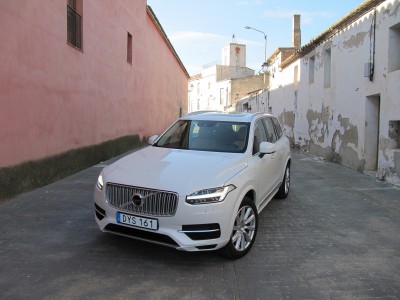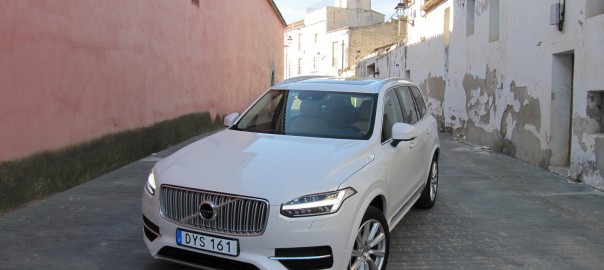By the end of this year, there will be several luxury SUV models offered in the U.S. with plug-in hybrid powertrains that let them run 12 to 20 miles on electricity alone.
We’ve now driven one of them, the 2016 Volvo XC90 T8 “Twin Engine” model, which will go on sale this fall.
And based on our impressions of a pre-production prototype driven 96 miles through the Spanish countryside southwest of Barcelona, we think buyers will be pleased.

The plug-in XC90’s most immediate competitors will be plug-in hybrid versions of the BMW X5 and Mercedes-Benz GLE (nee ML) luxury crossover utility vehicles.
The big Volvo plug-in has one advantage over its near-term electrified competitors, though: It’s the only vehicle that was designed from scratch with a plug-in hybrid powertrain envisioned.
That allowed Volvo to put the battery pack not under the load bay, as the BMW and Mercedes do, but in the tunnel between the front passenger seats–meaning cargo capacity remains exactly the same as in the gasoline-only version.
That also makes it the world’s sole seven-seat plug-in hybrid SUV; the German models and also the Mitsubishi Outlander Plug-In Hybrid all have only two rows and five seats apiece.
The lithium-ion battery pack itself has a capacity specified at 9.2 kilowatt-hours, of which 6.5 kWh is used to power the vehicle. Volvo quotes a range of 40 km (25 miles), but that’s on the European NEDC cycle. We estimate that the comparable EPA number is likely to be between 18 and 21 miles.
The complete powertrain of the XC90 T8 comprises Volvo’s 316-horsepower 2.0-liter supercharged and turbocharged four-cylinder engine powering the front wheels through an eight-speed automatic transmission, with a 60-kilowatt (80-hp) electric motor driving the rear wheels.
There’s also a 34-kW (46-hp) starter-generator motor between the engine and transmission, which recharges the battery during regenerative braking or engine overrun, and can also provide additional torque to the transmission when maximum power is required.
The battery and both electric motors are liquid-cooled, and the battery coolant can also be refrigerated if additional heat must be shed.
Volvo quotes a combined power output of “about 400 horsepower,” but a precise torque figure of 472 lb-ft (compared to the 295 lb-ft produced by the non-hybrid version).
The onboard charger operates at 3.5 kilowatts and will have a North American standard J-1772 socket, though maximum amperage for the charger was quoted at 16 amps–a figure we’re double-checking with Volvo.
The company quotes a recharging time of 2.5 hours at 240 volts and 16 amps.
Read more: Green Car Reports
